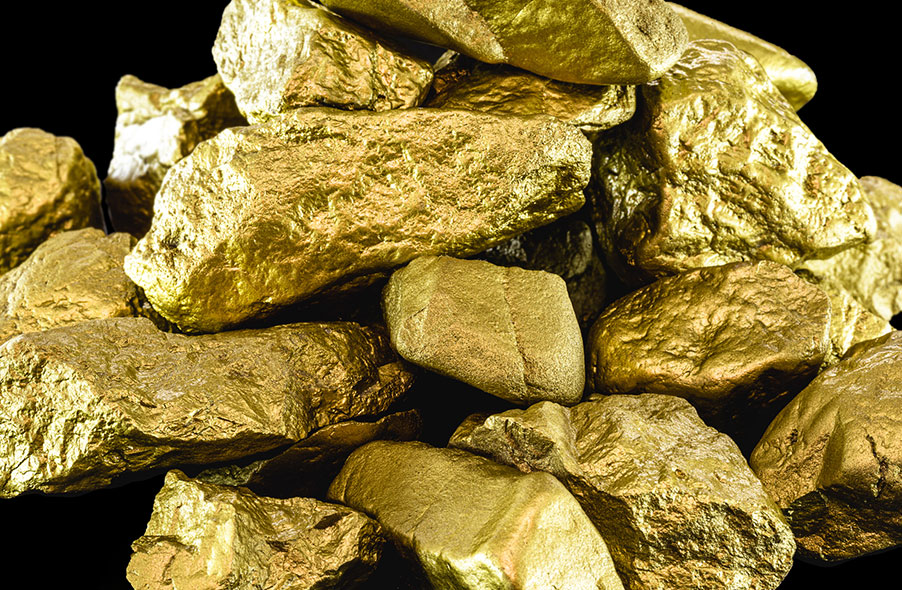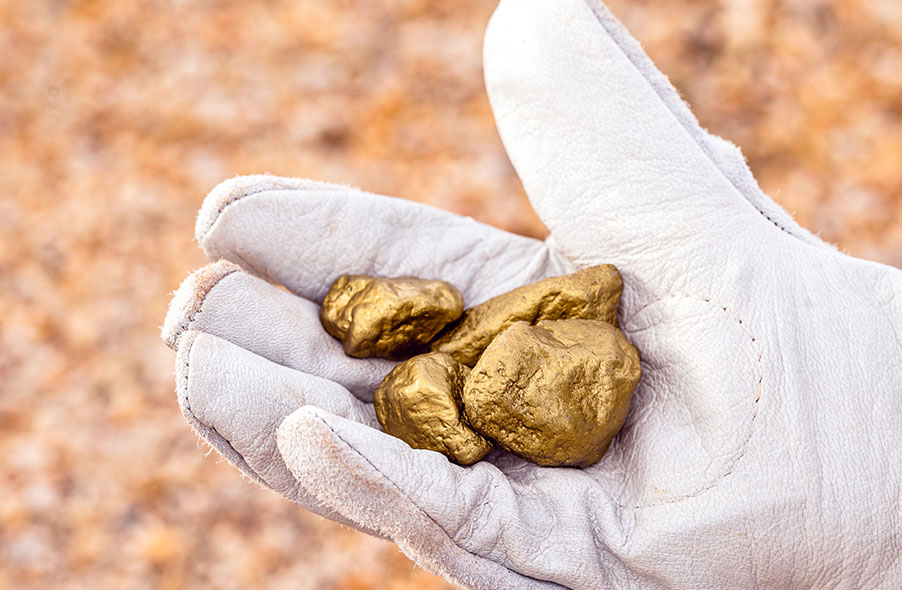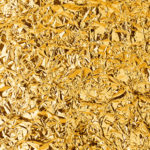When it comes to investing in gold, there are plenty of ways to obtain the material. Some are not tangible, like paper gold, which provides the opportunity for ownership without being able to hold onto the gold product in question.
Strange as that may seem, it may feel less jarring than actually holding physical gold in one of its many forms. After all, we have a mental picture of vaults filled with gleaming gold bars, coins, and more. It can be hard to wrap your mind around the actual concept of what gold is beyond what it represents in the market.
So what do you need to know about the actual physical properties of gold for ownership—for instance, is gold a mineral or a metal? We’ve prepared a primer on the qualities of gold and how it is classified as a substance.
Is Gold a Mineral or Metal?
To answer this question, we have to explain a bit about the differences and similarities between metals and minerals.
Minerals are generally defined in earth sciences as naturally occurring crystalline solids. This means that they are created without any interference from other lifeforms, like humans or animals, and form with a crystal structure.
Metals, on the other hand, are elementary substances that are crystalline when they are solid and naturally occur in minerals. What’s more, they are not mutually exclusive from being minerals. Gold, along with copper and silver, are metals that also occur in nature as crystalline solids.
Gold is an elementary substance—a pure substance made up of the same elements that can’t be broken into two or more different substances. Gold, as most gold buyers know, is produced by converting the material into the metallic ores with which we’re familiar. But given gold’s many valuable properties—including being very malleable and conducting electricity well—it is also used for technology and other industries that reduce it down.
In short, gold is both a mineral and a metal, making it a dynamic precious metal with a wide array of applications.
Is Gold a Mineral By Every Classification?
No. Although the above definition comes from the earth sciences field, other science professionals might not classify gold as a mineral for the sake of their studies.
In health sciences, minerals are defined as chemical elements that are beneficial for the bodies of living organisms in some way. Most often, this translates to nutrition. Because gold doesn’t have any value in that sense, a health scientist would not include gold in their rundown of minerals, even if copper, iron, and zinc would be.
Also, typically when it comes to purchasing gold, people think of it as a commodity, which aligns it more closely with an earth science perspective.
How Does Gold Appear in Nature?

Once you’ve moved past “is gold a mineral?” you can start digging into the variety of ways that gold presents in its natural, mineral form.
There are three primary types of deposits where gold occurs in nature as hydrothermal quartz veins:
- Metamorphic and igneous rocks: rocks that change form by forces such as lava
- Volcanic-exhalative sulfide deposits: usually found in channel ways on the seafloor
- Placer deposits (consolidated to unconsolidated): primary rocks that are weathered or eroded to create a concentration of valuable materials like gold
Primarily gold occurs under the surface of the Earth, forming either in the metamorphic rocks or the volcanic-exhalative sulfide deposits, in what’s known as a hypogene process. Consolidated to unconsolidated placer deposits are less common, as they require a lot of time to breakdown the rocks and create a build-up of the gold in question.
Because of these various processes, gold is not always found by itself. Usually, people discover gold as grains diffused through quartz and pyrite, along with other sulfides.
The standard visual of gold flakes, grains, and nuggets, usually stems only from an ancient stream or river deposit that sits over the quartz veins listed above.
Fake Gold’s Mineral Properties
Unsurprisingly, fake gold forms in a way that is very similar to actual gold. Commonly known as fool’s gold, it is known to geologists as pyrite or iron sulfide. It’s an incredibly common mineral, and to an untrained eye, it might resemble gold.
Pyrite had many applications that have since fallen out of favor. But it’s not useless because gold forms under the same circumstances as pyrite, which could indicate that there are more extensive deposits of gold in the vicinity. As stated above, smaller amounts of gold can even be present within pyrite.
If you’re curious about ways to tell the difference between real gold and fool’s gold mineral deposits, consider these two significant variances:
- Color: Gold famously has a warmer, more yellow color. Pyrite is a bit more brassy, even with a metallic luster that resembles gold.
- Physical feel: Gold is pliable and soft, making it bendable. Fool’s gold pyrite is far more brittle and will break instead of merely bending.
Is Gold a Mineral Used for Building?
So if gold is both a metal and a mineral used in certain alloys (a metal made by combining two or more types of metals, like that of fake gold), then is it useful for building purposes? It may seem feasible—after all, gold is chemically inactive, making it unaffected by moisture or air, and immune to rust.
While a building made of gold isn’t impossible, it isn’t practical. Skyscrapers and modern buildings require a lot of metal for beams, ducts, and more structural elements. Not only would using a gold alloy be incredibly expensive, but there are already other more contemporary alloys that do the trick quite nicely like corrosion-resistant steel alloys, also known as stainless steel.
How is Metal Gold Used Throughout Industries?
While most people think of gold for currency and jewelry applications, the truth is gold has several uses in everyday life. Because it is such a soft metal, gold is incredibly ductile—able to be drawn out for thin metal wires.
Nowadays, manufacturing demands on gold also include:
- Electronic and computer connectors
- Commercial chemistry
- Dentistry and medical applications, including injections and diagnostic tools
- Aerospace
- Glassmaking
Quick Gold History Facts
As you probably know, gold has been used for centuries by humans. Almost every established culture has a record of using gold as a way to demonstrate power and privilege. Its sparkle and chemical properties made it highly valuable as both a currency and a commodity, and it later became a staple for jewelry, technology, and other industries.
As such, gold has a long, storied history around its development and uses. Below are just some of these interesting facts.
- Gold was one of the first minerals recorded to be used by prehistoric cultures. Graves of royals from Mesopotamia (modern-day Iraq) contained a plethora of gold objects from burials performed between 3800 and 2000 B.C.E.
- The first recorded use of gold as currency was in 700 B.C.E., with the advent of gold coins.
- 700 B.C.E. is also when researchers first recorded gold-use for dentistry purposes.
- The periodic table symbol for gold, “Au,” was used by Jöns Jakob Berzelius from the Latin name for the mineral, “aurum.”
- Egyptians famously loved gold and began mining it as early as 2000 B.C.E. King Tutankhamen’s death mask alone contained about 100 kg of gold.
- In West Africa, during medieval times, salt had the same value as gold!
- There’s some disagreement as to how we came to the word “gold.” The English word first appeared around 725 C.E., and seems to be of Germanic origins, connected to first words for “to shine” and “yellow.”
- Gold has been a favorite for metal workers and not just for its glimmer. The malleability of the mineral makes it incredibly useful, even though it is expensive. A single gram of gold can be hammered into a 1-meter sheet, making it perfect for technological applications.
- South Africa and China are among the biggest producers of gold in the modern world.
- Gold has been discovered in some form on every continent on Earth.
- You can eat gold! Several products offer gold flakes to eat. As noted above, however, it provides no mineral benefits to your body
- Throughout history, people have mined an estimated 142,000 tons of gold. Scientists also estimate that there are about 9 billion metric tons of gold formed in volcanic-exhalative sulfide deposits in the sea, which is mostly unextractable.
Here to Help
There’s a lot more to learn about gold, especially if you plan on becoming an investor. Although the gold market resists the volatility of the rest of the financial world, it never hurts to know about the properties and requirements of what makes gold valuable.
If you’re looking for guidance on the subject, get in touch. Our knowledgeable and friendly staff is happy to help you know more about gold commodities, investment opportunities, and more.





